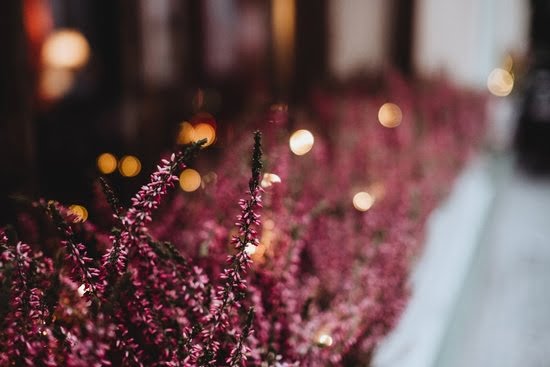Are you looking for innovative and efficient ways to maximize your gardening space? Look no further than square foot gardening grid ideas. Square foot gardening is a popular method for growing a variety of plants in a small area, and using a grid system can make the process even more organized and productive.
In this article, we will explore the benefits of using a grid system in square foot gardening, the different types of grids available, tips for creating and maintaining the perfect grid for your garden, creative layout ideas, companion planting strategies, and how to maximize yield and space with square foot gardening grids. Additionally, we will delve into case studies and success stories of square foot gardening using grids to inspire and motivate you on your own gardening journey.
Whether you’re a seasoned gardener or just starting out, this comprehensive guide to square foot gardening grid ideas will provide you with the knowledge and inspiration to create a bountiful and beautiful garden in any space. So let’s dive in and discover the endless possibilities of square foot gardening grids.
Benefits of Using a Grid System in Square Foot Gardening
When it comes to square foot gardening, using a grid system offers numerous benefits that can help maximize your garden space and yield. The grid system is essentially a way of dividing your garden bed into square foot sections, making it easier to organize and plan your planting.
One of the main advantages of using a grid system in square foot gardening is the ability to efficiently utilize space. By dividing your garden into smaller sections, you can plant different types of vegetables, herbs, and flowers in each square foot. This not only maximizes the use of space but also helps with organization and maintenance.
Another benefit of using a grid system is the ease of maintenance it provides. With clearly defined sections, it becomes much simpler to keep track of what is planted where. This makes tasks such as watering, weeding, and harvesting more efficient and less time-consuming.
Additionally, using a grid system in square foot gardening can also promote better plant growth. The organized layout allows for proper spacing between plants, which can help improve air circulation and reduce the risk of diseases. It also makes it easier to identify and address any issues with specific plants or sections of the garden.
Types of Grids for Square Foot Gardening
- Wooden grids: These are a popular choice for many square foot gardeners due to their natural look and durability.
- PVC grids: PVC grids are lightweight and easy to install, making them a convenient option for those looking for a low-maintenance solution.
- Metal grids: Metal grids are sturdy and long-lasting, making them ideal for larger or permanent gardens.
Different Types of Grids for Square Foot Gardening (Ie Wooden, PVC, Metal, Etc)
Square foot gardening is a popular method for growing vegetables and flowers in a small, organized space. The key to successful square foot gardening lies in the use of a grid system. This system divides the garden into individual square units, making it easy to manage and maintain. There are various types of grids that can be used for square foot gardening, each with its own advantages and disadvantages.
Wooden Grids
Wooden grids are a popular choice for square foot gardening due to their natural look and ease of construction. They can be built using simple materials such as lumber or cedar planks, making them an affordable option for gardeners on a budget. Wooden grids are also customizable, allowing you to create the perfect layout for your specific gardening needs.
PVC Grids
PVC grids are another common choice for square foot gardening. They are lightweight, easy to assemble, and resistant to moisture and decay, making them durable and long-lasting. PVC grids can be easily removed and repositioned as needed, providing flexibility in garden layout changes.
Metal Grids
Metal grids offer strength and durability, making them ideal for long-term use in square foot gardening. They provide stability and support for plants while withstanding the elements. However, metal grids may be more expensive than wooden or PVC options.
When choosing a grid type for your square foot gardening project, consider factors such as cost, durability, maintenance requirements, and personal preference. Each type of grid has its own unique benefits, so it’s important to weigh the pros and cons before making a decision that best suits your garden needs.
Regardless of the material chosen for your grid system, the most important aspect is that it facilitates organization within your garden space. Once chosen and implemented correctly each type of grid assures an efficient utilization leading to higher yields regardless if you’re focusing on vegetables or flowers alike.
Tips for Creating and Maintaining the Perfect Grid for Your Garden
Creating and maintaining a perfect grid for your square foot gardening is essential for maximizing space and yield. Here are some tips to help you achieve the perfect grid for your garden:
Choose the Right Grid Material
When creating a grid for your square foot gardening, it’s important to choose the right material that suits your needs. Wooden grids provide a rustic look and are easily customizable, while PVC grids are lightweight and weather-resistant. Metal grids are durable and long-lasting, making them suitable for long-term use. Consider the pros and cons of each material before selecting the one that fits best with your gardening style.
Properly Mark and Measure Your Grid
Before installing the grid in your garden, be sure to properly mark and measure the designated squares according to the square foot gardening method. Use a measuring tape or ruler to ensure that each square is accurately sized. This will help maintain organization within your garden and prevent overcrowding of plants.
Maintain Regular Maintenance
Once your grid is in place, regular maintenance is crucial for keeping it in top condition. Check for any signs of wear or damage to ensure that it remains sturdy and functional throughout the growing season. Additionally, adjust or replace any damaged sections as needed to keep your grid intact.
By following these tips, you can ensure that your square foot gardening grid is well-maintained and ready to accommodate a bountiful harvest.
Creative Layout Ideas for Square Foot Gardening Grids
Square foot gardening is a popular and efficient method of growing vegetables and herbs in a small space. One of the key components of square foot gardening is the use of a grid system to divide the garden into square foot sections, making it easier to plan and plant your crops. In this section, we will explore some creative layout ideas for square foot gardening grids that can help you maximize your space and yield.
One creative layout idea for square foot gardening grids is to use different colored strings or ribbons to define the squares. This not only adds visual appeal to your garden but also makes it easier to differentiate between the different sections. For example, you could use red strings for tomato squares, green strings for lettuce squares, and so on. This can be especially helpful if you are planting a variety of crops in your garden.
Another creative layout idea is to incorporate vertical gardening elements into your grid system. For example, you can install trellises or vertical planters within certain squares to grow climbing plants such as beans, peas, cucumbers, or even small fruits like strawberries. This not only maximizes the use of vertical space but also adds an interesting dimension to your square foot garden.
You could also consider incorporating companion planting strategies into your grid layout. Certain plants complement each other when grown together, which can help improve soil health and reduce pests. For example, planting marigolds within certain squares can help repel nematodes and other harmful insects from neighboring vegetable plants. This way, you are using each square efficiently while promoting a healthy ecosystem in your garden.
| Creative Layout Ideas | Description |
|---|---|
| Use Different Colored Strings or Ribbons | Can help differentiate between different crop squares and add visual appeal |
| Incorporate Vertical Gardening Elements | Maximizes use of vertical space and adds an interesting dimension to the garden |
| Companion Planting Strategies | Using plants that complement each other when grown together can promote soil health and reduce pests |
Companion Planting Strategies for Square Foot Gardening Grids
When employing a grid system for your square foot garden, it’s essential to consider companion planting strategies to maximize the growth and health of your plants. Companion planting is the practice of grouping together plants that are mutually beneficial to one another, such as enhancing flavor, repelling pests, or providing shade.
One popular companion planting strategy for square foot gardening grids is the “Three Sisters” method, which involves planting corn, beans, and squash together in the same grid. The corn provides a structure for the beans to climb, the beans fix nitrogen in the soil that benefits all three plants, and the squash provides ground cover that helps retain moisture and suppress weeds.
Another effective companion planting strategy is pairing aromatic herbs such as basil and cilantro with vegetables like tomatoes or peppers. The strong scent of these herbs can help deter pests that may be attracted to the vegetables. Additionally, interplanting marigolds with your vegetables can also help repel harmful insects due to their strong fragrance.
Furthermore, consider utilizing beneficial flowers such as sunflowers or nasturtiums around your square foot gardening grids to attract pollinators like bees and butterflies. These pollinators are crucial for fruit development in many vegetable plants and can significantly increase your overall yield.
| Companion Planting Strategy | Benefit |
|---|---|
| Three Sisters Method (corn, beans, squash) | Mutually beneficial growth; improved soil quality |
| Aromatic Herbs with Vegetables | Natural pest deterrent; enhanced flavor |
| Beneficial Flowers (sunflowers, nasturtiums) | Pollinator attraction; increased fruit production |
How to Maximize Yield and Space With Square Foot Gardening Grids
When it comes to maximizing yield and space with square foot gardening grids, there are several strategies and techniques that can be employed to ensure a bountiful harvest. By properly utilizing the grid system, gardeners can make the most of their available space and increase the productivity of their crops.
Here are some tips for maximizing yield and space with square foot gardening grids:
1. Intensive Planting: One of the key principles of square foot gardening is intensive planting, which involves growing as many plants as possible in a small space. This can be achieved by closely spacing plants within each square foot, taking advantage of every inch of available space.
2. Succession Planting: Another way to maximize yield is by practicing succession planting, where new crops are planted as soon as one crop is harvested. This continuous planting ensures that the garden remains productive throughout the growing season, allowing for multiple harvests from the same area.
3. Vertical Gardening: Incorporating vertical elements into the grid system can also help maximize space in a square foot garden. Trellises, stakes, and other support structures can be used to grow vining or climbing plants vertically, freeing up valuable ground space for additional crops.
By implementing these strategies, gardeners can effectively maximize yield and space with their square foot gardening grids, ultimately reaping the rewards of a productive and efficient garden.
Case Studies and Success Stories of Square Foot Gardening Using Grids
In conclusion, square foot gardening grids are an innovative and efficient way to maximize space and yield in your garden. By utilizing a grid system, you can easily organize and maintain your plants while also implementing companion planting strategies for a more successful harvest. Whether you choose a wooden, PVC, metal, or other type of grid, the benefits of using this method in square foot gardening are clear.
One of the key advantages of using grids is the ability to create a designated space for each plant, minimizing overcrowding and optimizing the use of available space. Additionally, maintaining a well-organized grid system can help reduce weed growth and make it easier to keep track of plant growth and health.
As discussed, there are various creative layout ideas for square foot gardening grids that allow for versatility and customization based on your specific gardening needs. Whether you’re looking to incorporate vertical gardening techniques or simply want to experiment with different planting patterns, the grid system offers endless possibilities for creativity.
In addition, case studies and success stories of square foot gardening using grids showcase the potential for abundant harvests and thriving gardens. From urban settings with limited space to larger plots, the grid system has proven to be a valuable tool for gardeners of all levels. With proper planning and maintenance, anyone can achieve impressive results using square foot gardening grid ideas.
Frequently Asked Questions
What to Use for Square Foot Garden Grid?
For a square foot garden grid, you can use materials like wooden slats, twine, or even PVC pipes to divide the garden into square foot sections. Some gardeners also use sticks or small stakes for this purpose.
How Do You Layout a Square Foot Garden?
To layout a square foot garden, start by marking out the garden area and then dividing it into 1-foot squares using your chosen grid material. Each square will be used to plant different crops according to the guidelines of square foot gardening.
Is There an App for Square Foot Gardening Layout?
Yes, there are apps available for planning and organizing a square foot gardening layout. These apps provide tools to create virtual layouts of your garden, helping you arrange and manage your plants within the square foot design. They can be useful for both beginner and experienced gardeners looking to optimize their space effectively.

Welcome to my gardening blog! I am passionate about plants and enjoy sharing my knowledge and experiences with others. In this blog, I will write about everything related to gardening, from tips on how to get started to updates on my own garden projects.





